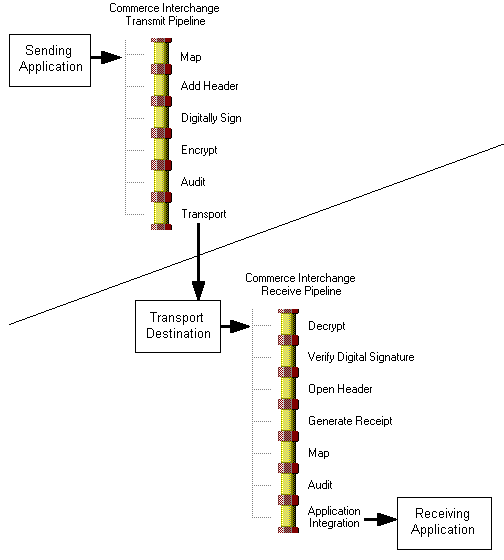

The Commerce Interchange Pipelines
A business-to-business scenario often involves two Commerce Interchange pipelines. One of these pipelines, the Transmit pipeline, packages an order and transmits it over a network or to a pipeline on the same computer. The second pipeline, a Receive pipeline, receives and reads the data, and performs various unpacking operations, such as decrypting the data, verifying the digital signature, and mapping the data to a format that can be read by an application.

The configuration of a particular pipeline is saved in a pipeline configuration (.pcf) file. The pipeline configuration contains the following component types:
- Mapping Components. Converts the contents of a business data object to a transmissible format, or converts received data to the object in which it was originally stored.
- Add/Open Header. Adds/removes elements to and from the Transport Dictionary including sender and receiver addresses and receipt requests.
- Digital Signature component. Determines the type of digital signature used (if any) to digitally sign a business data object, or to verify its signature.
- Encryption/Decryption component. Determines how to encrypt or decrypt the contents of the business data object, using certificates.
- Audit Components. Writes various pieces of the business data object to the audit database.
- Transport connector. Designed and configured to transmit or receive a business data object.
- Application Integration. Invokes an application to process the received business data object.
For each stage and component in the Transmit pipeline, there is usually a counterpart in the Receive pipeline (in reverse order).
© 1997-2000 Microsoft Corporation. All rights reserved.




